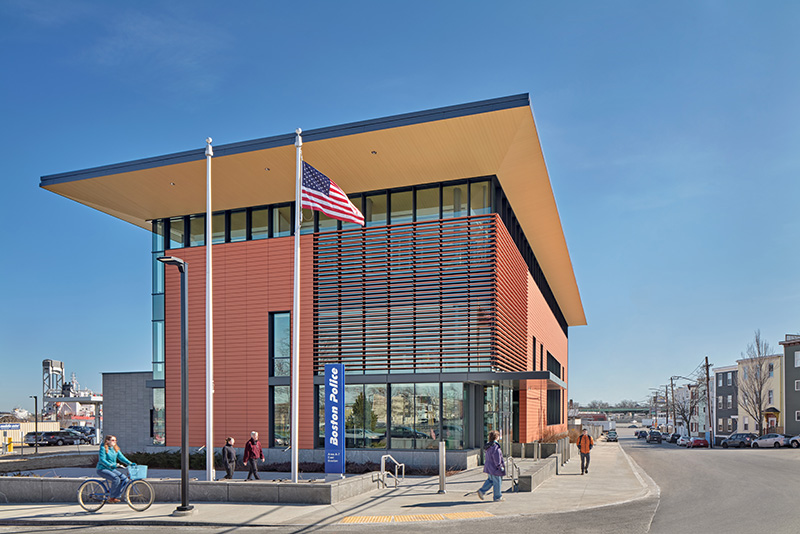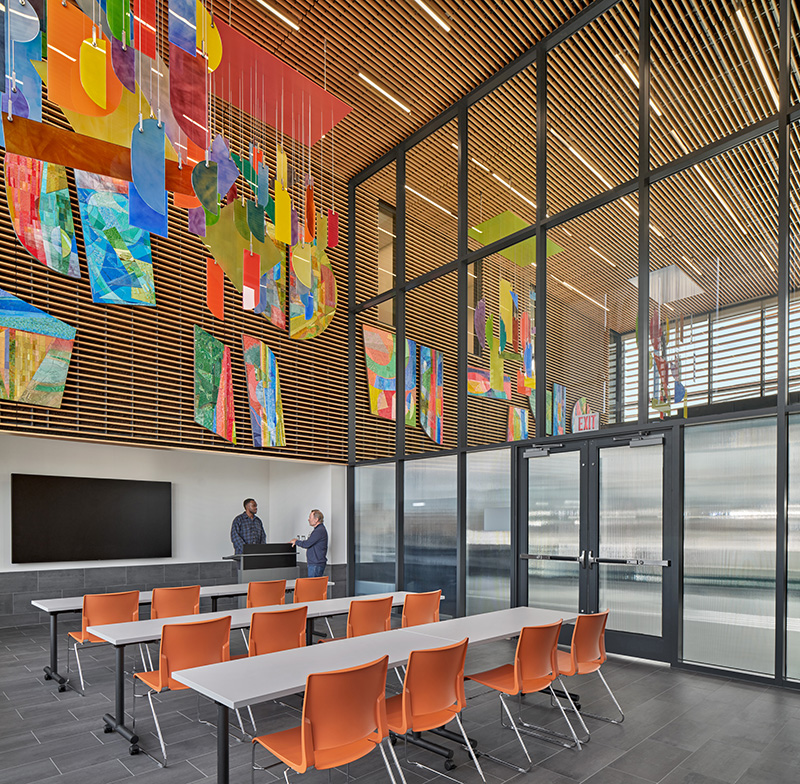
Leers Weinzapfel Associates designs East Boston Police Station

East Boston, MA Designed during the period when the relationship between the police and the communities they serve was at the forefront of national conversation, Leers Weinzapfel Associates’ $25 million, 27,500 s/f police station opened in January. The first new station in the city in a decade, the Area-7 LEED Silver facility focused on providing enhanced community access and improved dispatch response times.
Developed with the city of Boston Public Facilities Department, the station acts as a mediator among the industrial, commercial, and residential structures in its diverse urban neighborhood. It responds to the scale of the adjacent residential buildings and the materials of public buildings as a granite and terracotta-clad structure with a glass entry corner. The entry, lobby, and community room clearly identify the public zone of an otherwise highly secure facility. The main building houses police operations, detective offices, guard room, and lockers.
Occupied spaces were designed around a central core to maximize daylight and views throughout the building. The front supervisory desks have views to public areas and connections to police operations and detention zones. All occupied spaces receive natural light, and all office spaces provide maximum flexibility in use. The rear volume houses the highly secure detention area.
“We saw this project as an opportunity to architecturally address the hot button issue of community policing elevating the spaces, and therefore the experiences, where the police and those they serve come together,” said Leers Weinzapfel principal-in-charge Josiah Stevenson. “We created a double-height interior, selected warm materials, made the most of views to the nearby creek and the exterior public plaza, and worked with the artist Monika Bravo, who installed "Unus Mundus," a series of glass sculptures, to create a warm and welcoming environment. We believe this strengthens the already respectful relationship between the local population and officers, many of whom grew up in this community.”